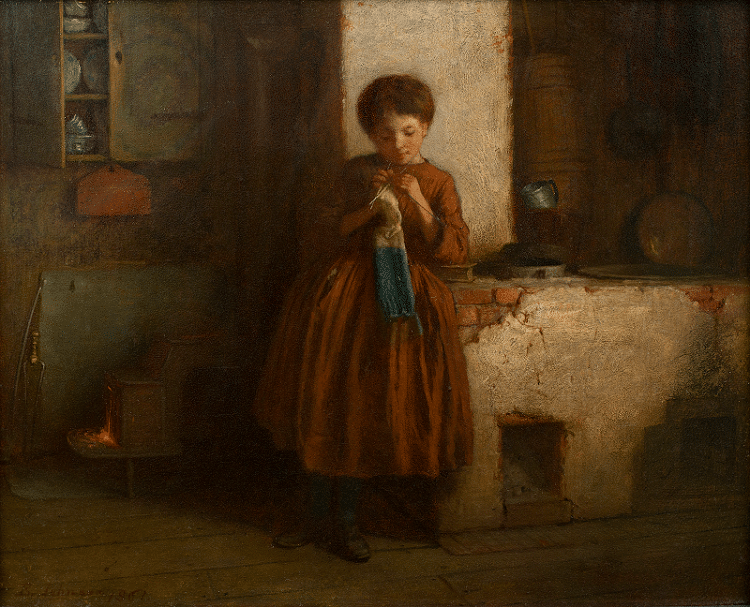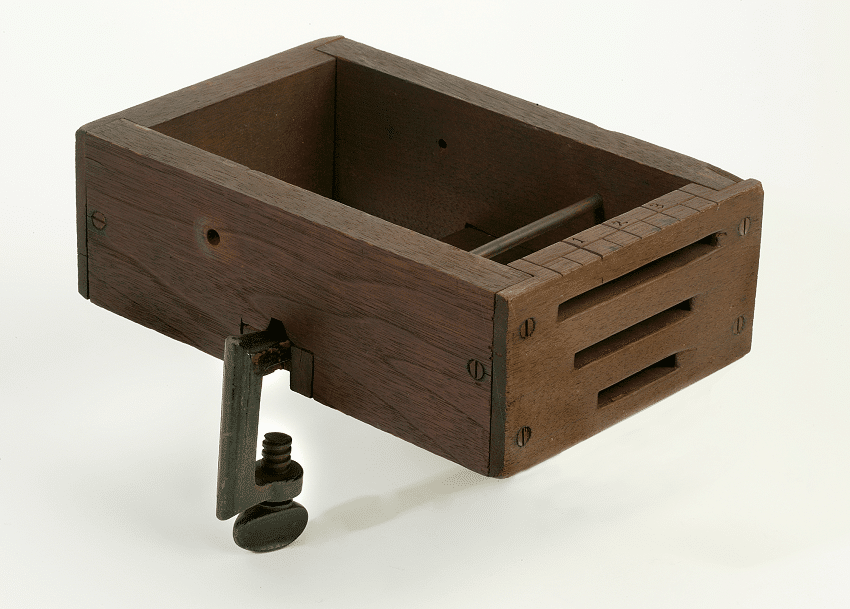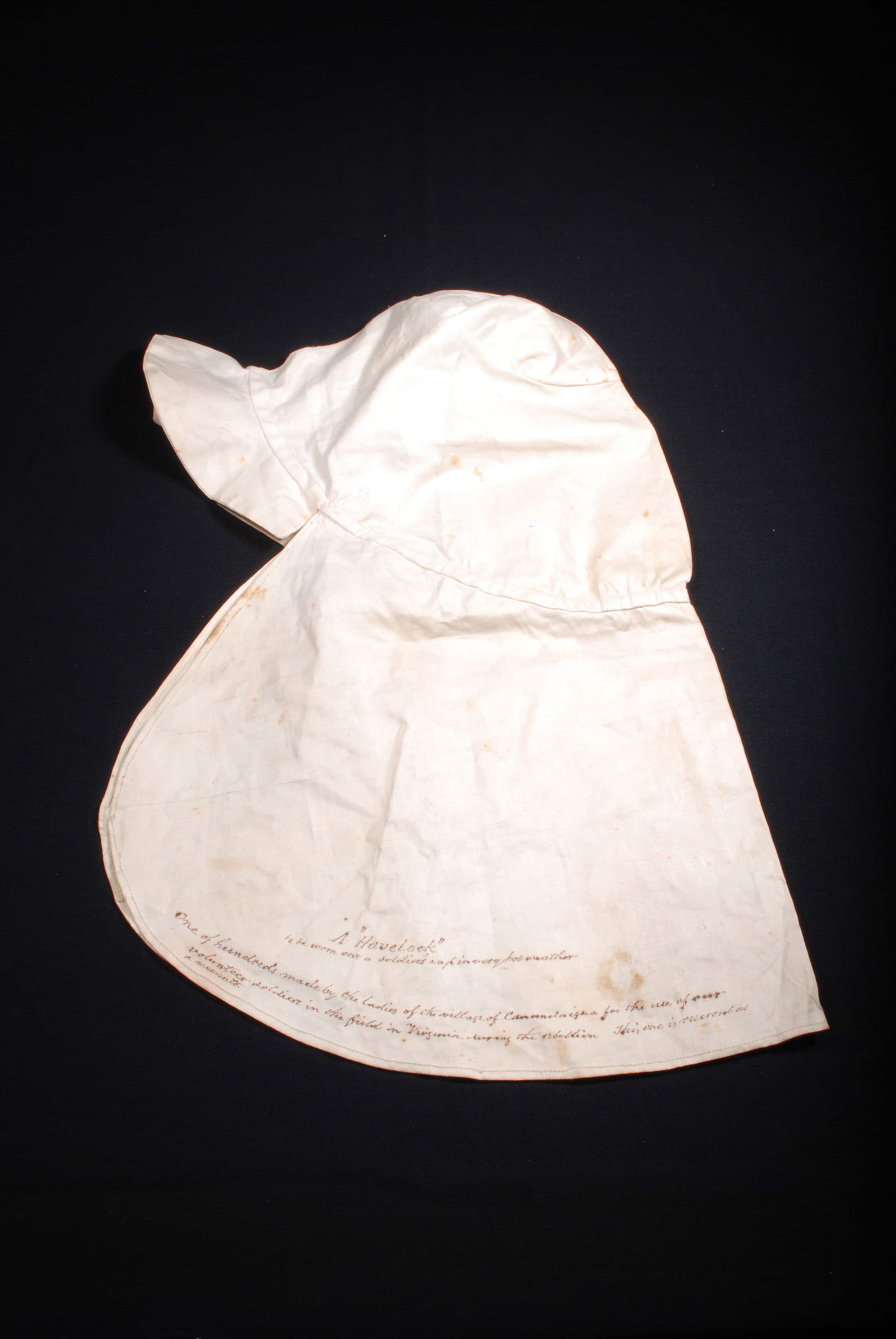Background
Supplying troops was a challenge for both the Union and the Confederacy during the American Civil War. Women on the home front rose to the challenge. They devoted their limited spare time and considerable skills to making much-needed items for soldiers. This small-scale war production was especially critical to the Confederacy, which lacked the factory infrastructure to mass-produce supplies.
About the Artifacts
Eastman Johnson’s painting Knitting for the Soldiers captures how women of all ages dedicated their spare time to knitting stockings and other clothing items for soldiers. Manufactured stockings were widely available, but they were poor quality. Soldiers complained that they wore out too quickly. Handmade knitted stockings were prized by the troops.
Another item in high demand was clean, rolled bandages. Women and girls used bandage rollers like the one pictured to speed up the process of producing this hospital necessity.
Soldiers did not appreciate every item produced at home. In the early days of the Civil War, women produced thousands of havelocks, or hat covers with flaps to protect soldiers’ necks from sunburn. Havelocks were very popular with British soldiers in India, but American soldiers saw little value in them and often tore them up for bandages or rags.
Vocabulary
- Confederacy: The group of states that seceded from the United States before the Civil War in order to preserve slavery.
- home front: The sphere of civilian activity during a war.
- Union: The name for the states that remained a part of the United State during the Civil War.
Discussion Questions
- How did women and girls support war production during the American Civil War?
- Why did Civil War soldiers prize homemade items?
- What do these items teach us about the mobilization of the home front during the American Civil War?
Suggested Activities
- Include these sources in any discussion about Civil War era mobilization of the home front.
- To learn more about how women’s wartime activities were hampered by societal expectations, read Nursing.
- American women still volunteer their time and skills to meet local, national, and international crises. After learning about women’s efforts during the Civil War, invite students to research and present a modern example of this work.
- For a larger lesson about the ways women contributed to Union and Confederate war efforts during the American Civil War, teach these resources together with any of the following: Life Story: Sojourner Truth, Nursing, Sanitary Fairs, Women Soldiers, Smuggling, Scenes from the Confederate Home Front, Changing the Rules of War, Life Story: Elizabeth Blackwell, Life Story: Emily Jane Liles Harris, Life Story: Loreta Janeta Velázquez, Life Story: Harriet Tubman, Life Story: Susie Baker King Taylor, and Swearing Loyalty.
Themes
DOMESTICITY AND FAMILY









